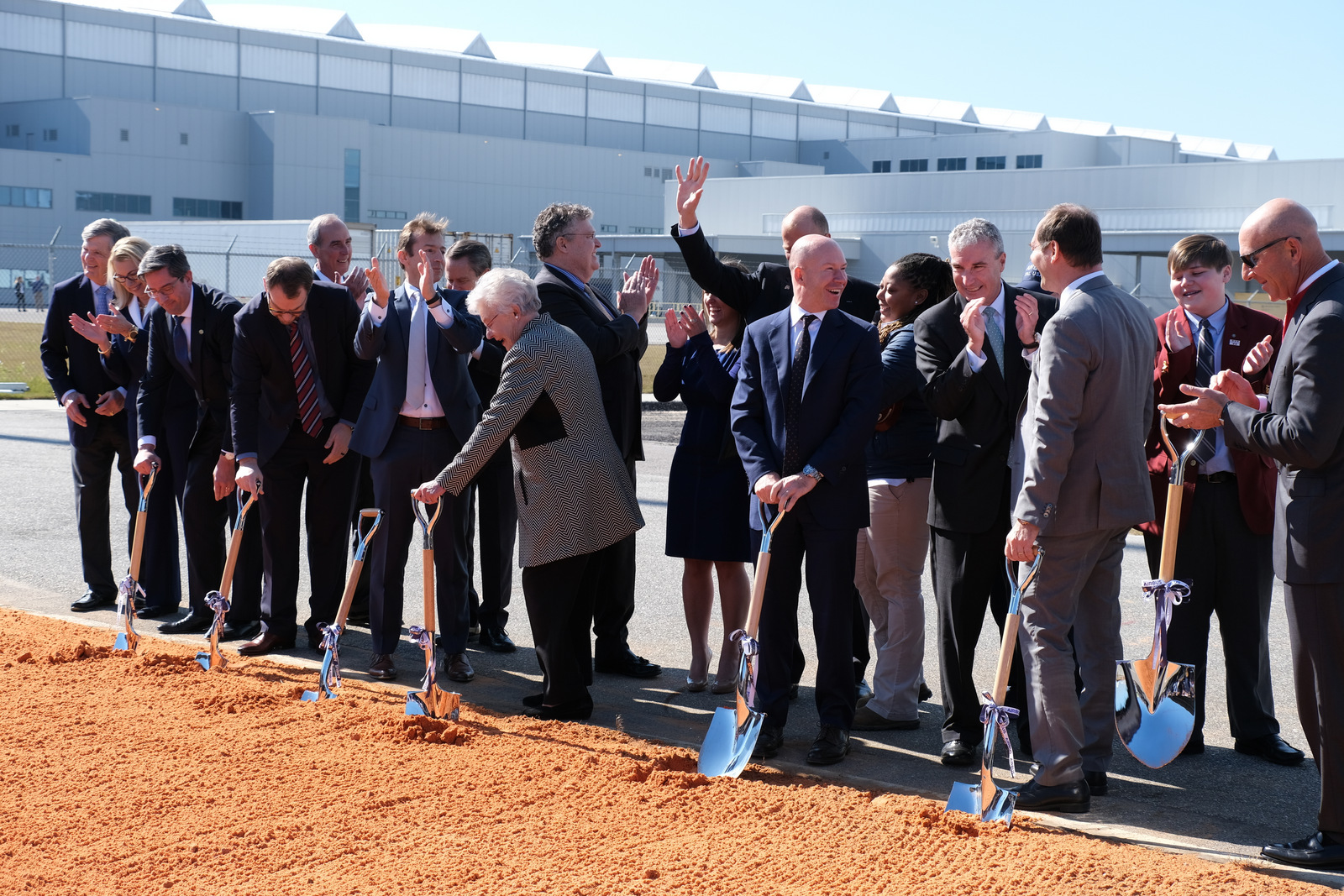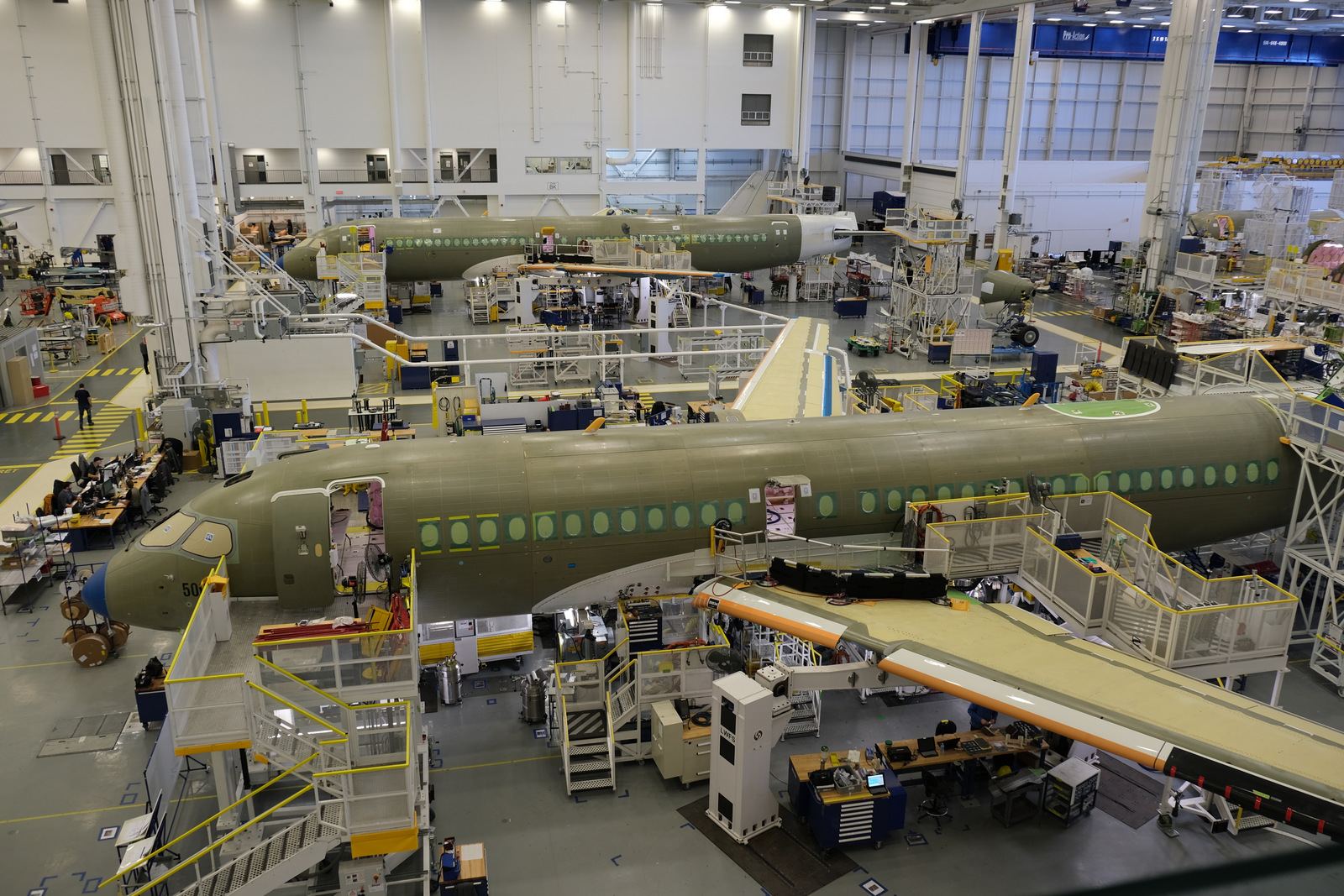Written for Skies Magazine
On July 1, 2018, the Bombardier C Series ceased to exist.
That was the day a new joint venture took control of the financially-stretched C Series program. Led by the Airbus Group with just over 50 per cent of the partnership, and Investissement Québec with about 16 per cent, Bombardier retained approximately 34 per cent of the program.
Renamed the Airbus A220, the advanced, aluminum-lithium bodied, composite winged, geared turbofan powered single-aisle jetliner was revealed to the aviation industry in its new Airbus colours at the Farnborough International Airshow in mid-July.
Now, more than half a year later, Airbus is firmly in control of A220 sales and marketing efforts, manufacturing, and the supply chain.
But how has Europe’s mega-airframer handled the transition, taking over a new but established program?
“We have a balanced management team, half from the former C Series and about half from Airbus,” said Philippe Balducchi, CEO of the A220 partnership. Balducchi is one of the senior Airbus team from Toulouse, France, who has made the move to Canada.
“The two cultures are extremely compatible. We are working very well together, and as we speak, we are creating our own A220 culture within the Airbus community,” he added, speaking to the international media in January, at the newly-anointed A220 final assembly facility in Mirabel, Que.
While there’s always a risk of a smaller operation disappearing within a large corporate takeover, the new-to-Canada Airbus executives recognize that the former C Series team has brought a unique perspective to the joint venture.
“One big thing here in Mirabel is a very strong spirit of pioneering. For any industry, especially big groups like Airbus, it’s always very good to be reminded to pioneer for the future. We find this in Mirabel, and it will be the best asset for the future of Airbus,” said Florent Massou, head of the A220 program, another Toulouse transplant.
Airbus recently announced an investment of US$30 million into the Mirabel operation, with an expansion to the pre-flight facilities and the construction of a new delivery centre scheduled to be completed by the end of this year.
The priority now is to reduce the unit cost of the aircraft, by bringing Airbus’s expertise to the production process, and its scale and clout to supplier and customer negotiations.
The partnership is targeting a double-digit percentage reduction in unit cost, which may be difficult to achieve while ramping up the production rate to the Mirabel facility’s maximum of 10 aircraft per month, by the mid-2020s.
Airbus doesn’t have the baggage of the massive cost overruns incurred by Bombardier during development, but there’s no less of a challenge to make money on each delivery.
“We are ready to really make this aircraft a commercial success. We do have a lot of work to be done, and we need to bring the unit cost down, that’s very clear. It’s quite a challenge,” said Balducchi.
In the meantime, 57 C Series and A220 jets are flying for five airlines as of the end of 2018, worldwide. The fleet has over 120,000 flight hours, and utilization of the aircraft is as much as 18 flight hours per day, with some airlines flying 13 legs per day.
Rob Dewar, perhaps best known as “the father of the C Series,” is now head of engineering and customer support for the A220 program.
“We have very good feedback from the customers, not only about the cabin comfort, but the fuel burn and the payload/range performance-it’s great after the [aircraft’s] development, to have this positive feedback,” said Dewar.
He announced that the A220 received 180-minute extended operations approval (ETOPS) from Transport Canada, which will give airlines the ability to fly more direct routes over water and remote regions. As of this writing, FAA and EASA approval is pending.
The order book for the A220 is now close to 540 aircraft, with 135 aircraft ordered and 33 planes delivered in 2018. U.S. airlines JetBlue Airways and a low-cost startup code-named Moxy have ordered 60 planes each.
U.S. launch operator Delta Air Lines recently added 15 jets to its order, for a new total of 90 aircraft, including the larger A220-300 (previously the CS300) with a seating capacity between 130 to 160 passengers. The airline will begin operations with the A220-100, the 100- to 135-seat version (originally named the CS100).
Delta was expecting to inaugurate its A220 service in early 2019, but that may have been delayed due to the impact of the U.S. government shutdown on the FAA’s ability to grant operating approval to the airline.

On Jan. 16, 2019, Airbus held a groundbreaking ceremony for the A220 manufacturing facility in Mobile, Ala.
Deliveries to U.S. airlines will eventually come from a brand-new A220 assembly line in Mobile, Ala. Co-located with Airbus’s North American A320 line, the ceremonial groundbreaking for the new facility took place on Jan. 16. The Mobile A220 line will eventually be capable of delivering four aircraft per month.
Air Canada will be one of three new operators of the A220 this year or early 2020, having ordered 45 A220-300s in June 2016, with options for 30 additional aircraft.
Mark Galardo, vice-president, Fleet Planning for Air Canada, explained that the A220 will be positioned on high-frequency, medium-volume routes, such as Montreal-Calgary and Toronto-Seattle.
But the range and economics of the aircraft will allow Air Canada to “consider new route opportunities, such as Montreal-Seattle, Toronto-San Jose, and Vancouver-Halifax, just to name a few–these are routes that are under study.”
“Our choice of the A220 was also to support a national fellow Canadian aviation champion,” said Galardo. “We felt that our order from a major North American carrier would be taken as a vote of confidence and stabilize the program.”
